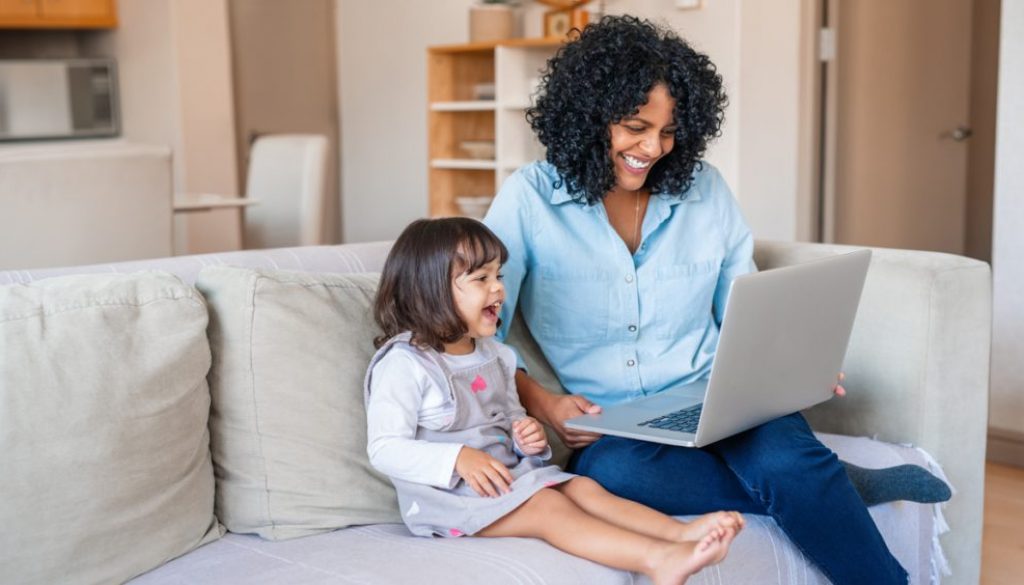Screen Time

These days everyone is home. We are all attempting to work, parent, school, entertain little ones, and stay sane while doing it all. It’s a lot, and sometimes we need a break and screen time is an easy “go to.” There is so much information out there about limiting the use of media and screen time for children, but in the age of Covid19 and with clear “Stay at Home Orders,” it is equally important to have realistic expectations about what that looks like. So how can we use media as a tool and a resource while still adhering to the American Academy of Pediatrics guidelines about screen time for kids?
According to the AAP, the recommendation for daily screen time use is:
- Children under 18 months should have limited access to any screen time besides live video interaction with family and friends. A caregiver should always be nearby to watch, talk and teach the child.
- Children 18 months to 2 years should have limited screen time and avoid solo use. When allowing screen time, choose high quality, educational shows for them and create dialogue around it to ensure they are understanding what they are watching.
- Children 2 years old to 5 years old should have only an hour a day of limited screen time use, and caregivers should be nearby to make sure that the child understands what they are viewing, and to talk about it. Choose programs that are educational, non-violent and promote social-emotional development.
Screen time can be useful, and it can even be educational, but we also know that there are no substitutes for social interaction, reading or play. These activities are important in the healthy development of social-emotional, intellectual and physical skills.
Here are a few simple ideas you can do at home to engage your little one outside of the use of screen time:
- Explore: Baby-proof an entire room and put an assortment of toys and safe household objects in the room to play with.
- Watch: Hang a bird feeder outside a widow where the child can see the birds and squirrels.
- Listen: Put music on and encourage your little one to sing and dance along to it. Getting to know classic sing-along songs is great for memorization.
- Touch: Toddlers like to dig, scoop, mold, and exercise their emerging fine motor skills. Provide some play dough or take them outside to dig in some dirt or sand.
- Splash: Let your child play with a shallow tray of water. Add toys and let them splash around with their hands. (Hint: Lay a towel down first)
- Look at books: Read a book or just look at the pictures with your child. Try to have some books that are unfamiliar so they will hold your child’s attention.
- Help: Since toddlers like to be where the action is, let them play alongside you while you work. Think creatively about how your child can help with a task; give them their own paper and something to draw with while you work or let them play with pots and pans while you cook.
Ideally, we could just sit and play with our little ones all day but that isn’t always possible or realistic. Keep in mind that these are just guidelines, the reality is that some days kids have more screen time than others, and there are some days that they may not have any screen time at all, either way keep in mind that every family is unique and finding a balance that works for your specific household is important. Remember, there is no right or wrong when it comes to what works for your family.





